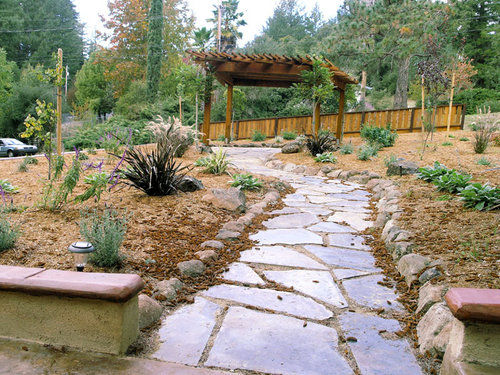
Usually, I don’t comment on the weather. By the time you read this, it might be dark and stormy. But today, the sky is blue, the daffodils are sporting sunny yellow faces and the flowering plums are bursting with color.
It’s good to have breaks in the rain to allow the soil to drain. As plant roots stir to life, they need oxygen to prevent rotting. Let’s hope that spring rains come regularly, but are spaced out. Here’s to a beautiful spring as Mother Nature clothes everything in bright apple green.
One of my New Year’s resolutions is to practice what I preach in this column. So, here’s what I’m doing this week in my garden:
• Fertilize
Perennials, shrubs and trees will get their first dose of organic, all-purpose fertilizer for the season. I’ll wait to feed azaleas, camellias and rhododendrons until the last flower buds start to open. Roses will get a high-nitrogen fertilizer to give foliage a boost, and next month, I’ll feed with a high-phosphorus fertilizer to encourage blooms.
• Feed chelated iron to azaleas, citrus and gardenias to green up their leaves.
Cool soil makes the leaves of these plants yellow this time of year.
• Cut back woody shrubs
To stimulate lush new growth on plants like Mexican bush sage, artemisia and butterfly bush, cut back to within a few inches of the ground. Don’t use this approach on lavender or ceanothus, though — only lightly prune them after blooming. Prune fuchsias back by a third and remove dead, crossing branches and interior twiggy growth. Container fuchsias can be cut back to the pot rim.
• Divide perennials.
My garden is shady all winter, and I have better results if I transplant and divide plants in late winter. Agapanthus, asters, coreopsis, daylilies, Shasta daisy and liriope are plants that tend to become overcrowded and benefit from dividing.
Those of you with lawns fall into two groups: those who need a recreational space for the kids, and those who don’t. If you’ve been thinking that this is the year to go lawn-free, here are some tips.
After removing the turf, start by looking at your pathways as they become focal points. A curving flagstone path laid down over gravel will allow excess water to soak into the earth, rather than run off.
Layer plants on berms, arranging low-growing varieties, such as lavender, santolina and creeping rosemary, at the base, and taller ones, like salvia Hot Lips, ornamental grasses and ceanothus, at the top if your area is sunny.
Shady gardeners can use tall plants like red-flowering currant with dicentra eximia at the base.
Group plants to give them a sense of mass, and use different textures and foliage colors for contrast. Make sure the plants you choose will stay the size you envision without much pruning.
Cover bare ground with covers or permeable gravel over weed-block fabric to conserve moisture.
Now, marvel that your water bill will be less than a third of what you once used for the lawn.
• Jan Nelson, a California certified nursery professional at Plant Works in Ben Lomond, will answer questions about gardening in the Santa Cruz Mountains. E-mail her at ja******@*ol.com.











